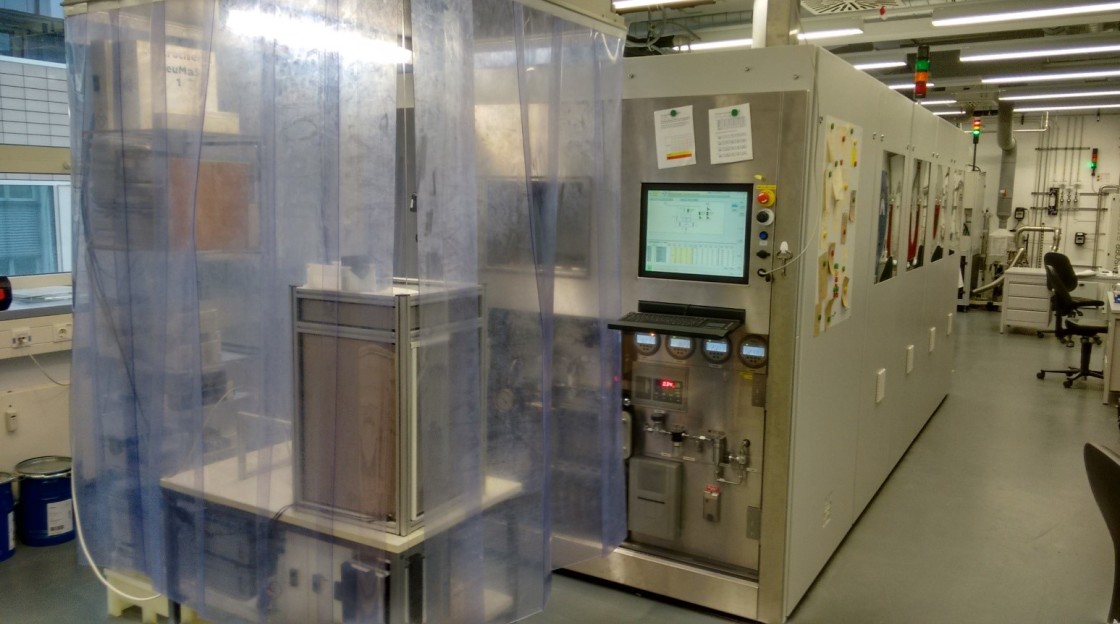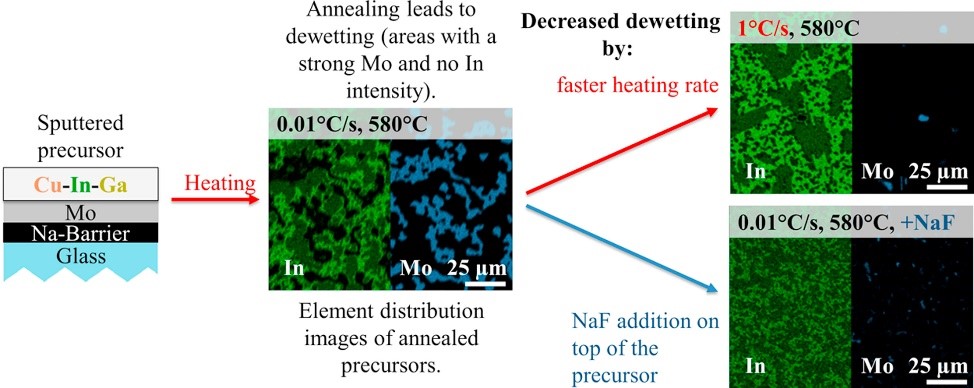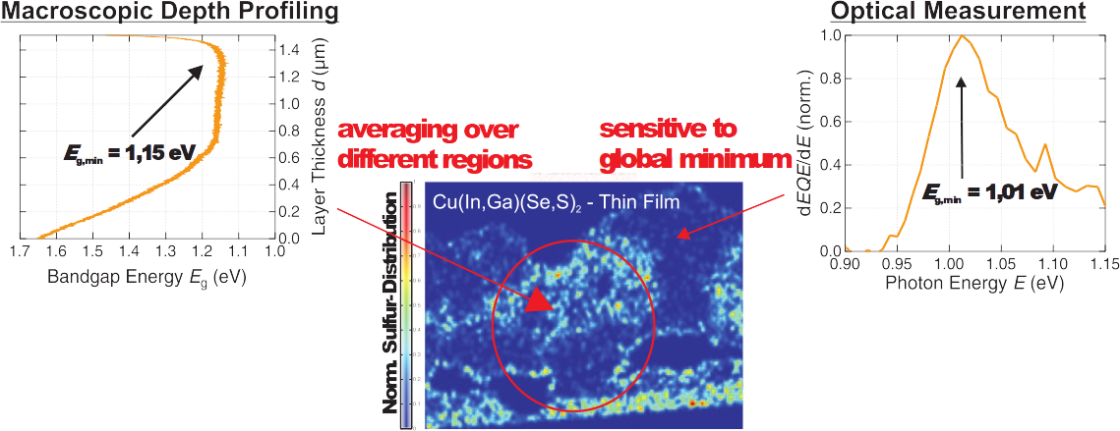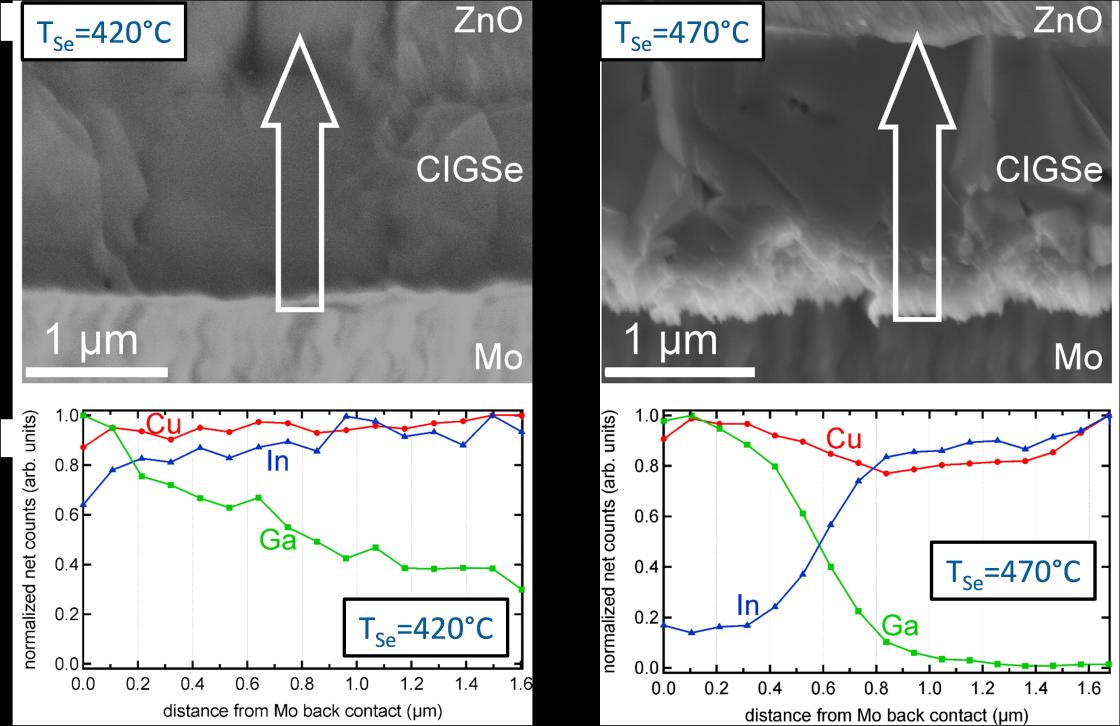PVcomB
CIGS layers grown from metal precursors by fast atmospheric inline chalcogenization
The sequential process, i.e., annealing precursor films in chalcogen containing atmosphere is one of the technologies implemented in industry for the preparation of chalcopyrite absorbers. Common variations use metal precursors in combination with long duration batch processes and H2Se/H2S or evaporated Se on top of metals (stacked elemental layers, SEL) in combination with rapid thermal processing (RTP) of single plates in H2S. The goal here is to develop an industrially feasible sequential process with reduced total cost of ownership. Our approach comprises a continuous inline compatible oven operating at atmospheric pressure and with short cycle times (minutes per plate). The oven is equipped with sources for S and Se vapour as well as a H2S gas supply. Absorbers for cells and modules up to 30x30 cm² can be prepared with high throughput and good reproducibility. The process development is guided by real time studies of phase formation by X-ray diffraction and fluorescence in cooperation with department EM-AME.
Recent topics
Influence of Se rates during the intial annealing phase
Low Se rates during the initial heating of the precursors are desired because this leads to a more homogeneous incorporation of Ga. However, as described in the following publication, the process window is limited by dewetting of the precursor if the Se rate is too low. Higher heating rates and NaF deposition can extend the process window.
Incorporation of elemental sulfur for band-gap widening
The discrepancy between sulfur depth profiles and the absorption edge in quantum efficiency is explained by an inhomogeneous incorporation of sulfur on a microscopic scale. Details can be found in the following publication:
Incorporation of gallium for band-gap widening
Low selenium rates during the initial stage of selenization lead to a more homogeneous depth distribution of Gallium. Thereby the band gap within the active region of the cell is widened and the efficiency increases. As described in the publication, a cell efficiency of 15.5% has been achieved with sulfur incorporation.
Connected projects
ACCESS




